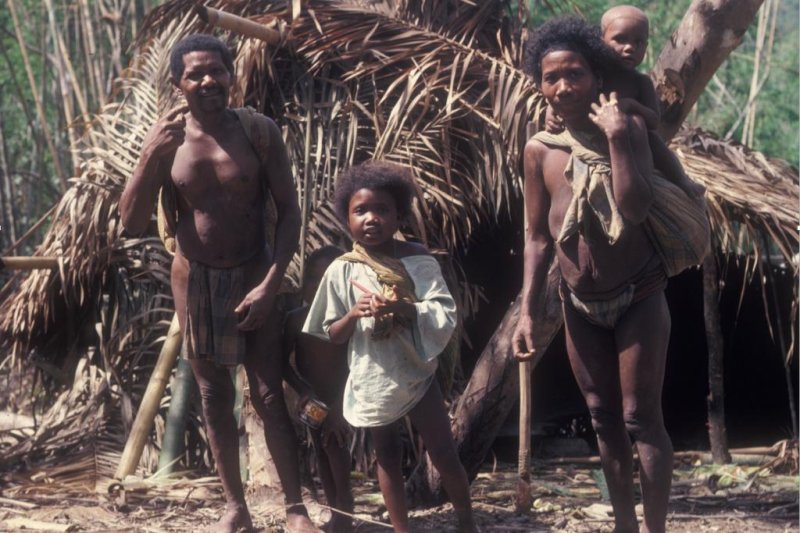A study in the 1970s found Malaysia's Batek people moved from camp to camp every eight days. A researcher at Harvard University recently used data from the original study to determine a "marginal value theorem" that can predict the movement of hunter-gatherer camps like the Batek. Photo by Kirk Endicott/Dartmouth University
March 6 (UPI) -- New research shows the "marginal value theorem" successfully predicts the movement of human hunter-gatherer camps like those of the Batek, an indigenous people living in the rainforest of Peninsular Malaysia.
The theorem has previously been used to describe the search for maximum foraging efficiency by species like bees. The new study, published in the journal PNAS, confirms the formula can be used to analyze human movements.
"Our results support what many anthropologists have long suspected -- that hunter-gatherers relocate their camps in response to how fast they deplete local resources," evolutionary biologist Vivek V. Venkataraman, said in a news release. "This study provides new insight about how our hominin ancestors might have moved as groups across ancient landscapes."
Venkataraman, now a postdoctoral researcher at Harvard University, conducted the newly published research while a grad student at Dartmouth University.
The new study used data collected by cultural anthropologists Kirk and Karen Endicott, Dartmouth researchers who studied the movements and foraging behaviors of the Batek in the 1970s.
Though the Batek people are now mostly stationary, they once lived nomadically, subsisting on hunted small game and gathered wild yams and fruit. The Endicotts measured the Batek's movements as well as the rate at which they depleted local resources.
Venkataraman used the data from the Endicotts' research and the marginal value theorem to build a predictive model. The model's results were very similar to the records of Batek migration documented by Kirk and Karen Endicott.
"In the 1970s, Karen and I had the rare opportunity to live with a group of fully nomadic Batek foragers, who became enthusiastic partners in our efforts to record their acquisition of food," said Kirk Endicott, professor emeritus of anthropology at Dartmouth. "We are delighted that our talented young colleagues, coming from evolutionary biology, have been able to use some of the data we collected back then to address important questions in hunter-gatherer studies, including the determinants of camp movements."















